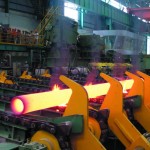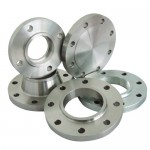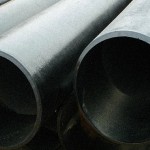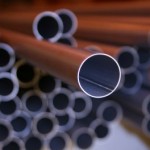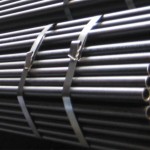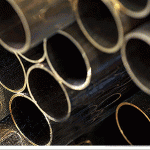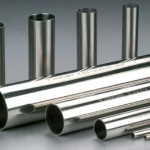Hot-rolled seamless steel tube
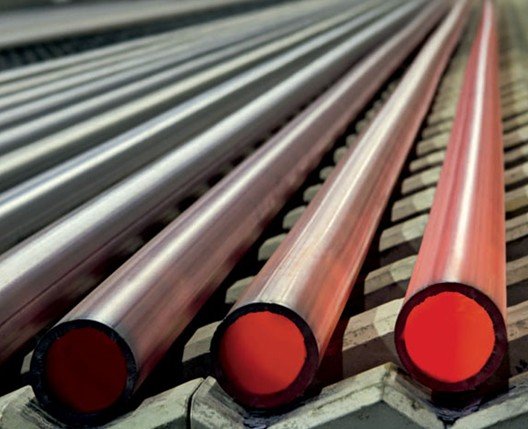
The hot-rolled seamless steel tube is widely used for sewage disposal, well-rig, electricity generating station, air conditioning tube, heating power tube line, threading tube, pile driving tube, steel construction tube, coal gas, chemical industry, etc.
Advantages:
hot rolled seamless steel tube can damage the cast microstructure of the steel ingot, refinement of the crystal grains of the steel, and eliminate the defects of the microstructure, so that the the steel organization compacting, improve the mechanical properties. This improvement is reflected in the rolling direction, so that the steel is no longer to a certain extent isotropic; pouring the formation of bubbles, cracks, and osteoporosis, under high temperature and pressure can also be welded together.
Disadvantages:
- After the hot rolling, the nonmetallic inclusions in the interior of a steel (mainly sulfides and oxides, as well as the silicate) was pressed into a sheet, stratified (laminated) phenomenon appears. The layering of the steel in the thickness direction by the pull performance deteriorated significantly, and may appear in the weld shrinkage interlayer tear. Weld shrinkage induced local strain often reach several times the yield point strain, the strain is much greater than the load caused;
- Residual stress caused by uneven cooling. The residual stress is the stress of internal self-phase equilibrium in the absence of external force, the hot-rolled steel of various cross-sectional has a residual stress such Usually steel sectional dimension is the greater, the greater the residual stresses. Residual stress is self-phase equilibrium, but the steel members in the performance external force or have a certain influence. Such as deformation, stability, anti-fatigue may adversely.
- Hot-rolled steel products, poor control of thickness and edge width. We are familiar with the thermal expansion and contraction, even if the beginning of the hot-rolled out are standard length, thickness, or there will be some negative final after cooling, this negative differential edge width wider the increasing thickness of the performance of the more obvious. So for large steel for steel edge width, thickness, length, angle, and sideline no law requires too precise.
Usage:
Applicable to the general structure, mechanical structure, Low, medium and high pressure boiler,
transportation for gas, water, oil and natural gas, tubes for heat exchanger and chemical fertilizer
equipments, for hydraul hydraulic pillar service etc..
Standard:
1.Carbon steel pipe: ASTM A106,A53, ASTM A179, ASTM A192,DIN17175 ST45.8 ST35.8
2.Alloy steel pipe: ASTM A335,ASTM A213
3.Stainless steel pipe: ASTM A312,ASTM A213
4.Line pipe and cashing pipe: API5L ,API 5CT
Out Diameter:
1/8 – 30 inch (10.3-762mm)
Wall Thickness:
0.049” – 2.5” (1.24- 63.5mm)
Length:
Random Length, Fixed Length, SRL, DRL
Steel Grade:
API 5L: GR B, X42, X46, X56, X60, X65, X70
ASTM A53/A106: GR A, GR B, GR C
ASME SA106: GR.A, GR.B, GR.C
ASME SA192: SA192
ASME SA209M: T1, T1a
ASME SA210: GR.A-1, GR.C
ASME SA213: T2, T5, T9, T11, T12, T22
ASME SA335: P2, P5, P9, P11, P12, P22, P91
DIN17175:ST35.8, ST45.8, 15Mo3, 13CrMo44
Heat treatment:
Annealed: Bright annealed,Spheroidize annealed, Normalized, Stress relieved,
Cold finished, Quenched and Tempered
Delivery Condition:
BKS, NBK, BK, BKW, GBK(+A), NBK(+N), BK(+C)
Dimension Tolerance:
| Steel Pipe Specification | Steel Pipe Outside Diameter(D) | Steel Pipe Wall Thickness(S) | ||
| Pipe Body
|
Steel Pipe Outside Diameter (mm) | Allowable deviation (mm) | Steel Pipe Outside Diameter (mm) | Allowable Deviation (mm) |
| ≥60.3 and S<20 | ±0.75% | ≤73.0 | +15%,-12.5% | |
| ≥60.3 and S≥20 | ±1.00% | >73.0 and S<20 | +15%,-12.5% | |
| >73.0 and S≥20 | +17.5%,-10 | |||

